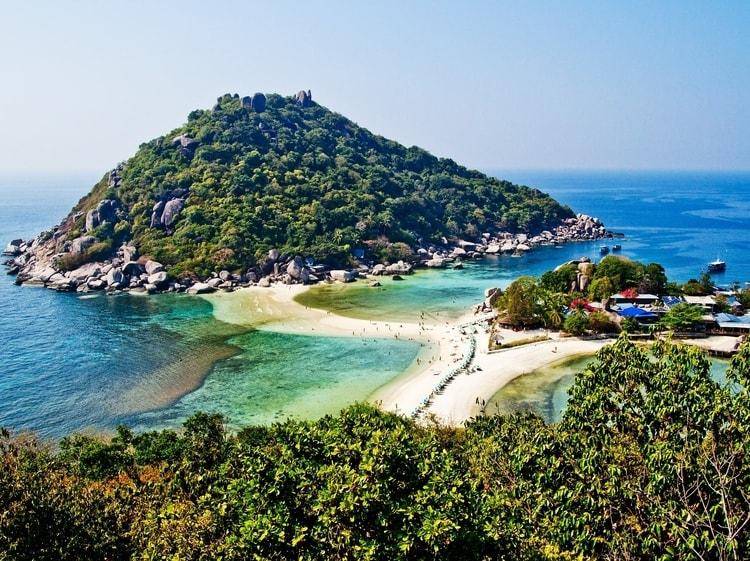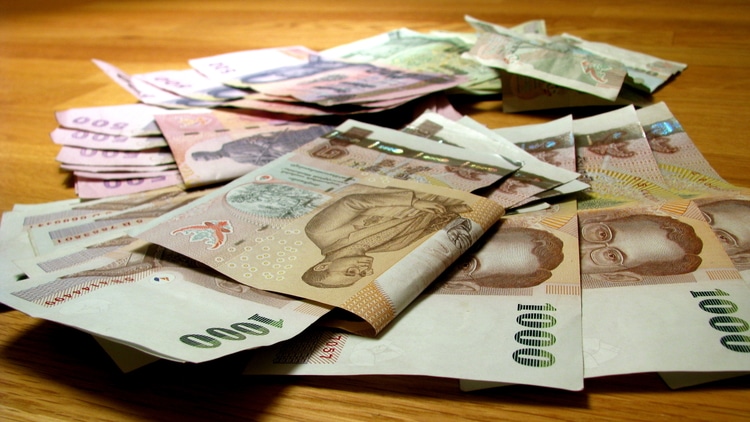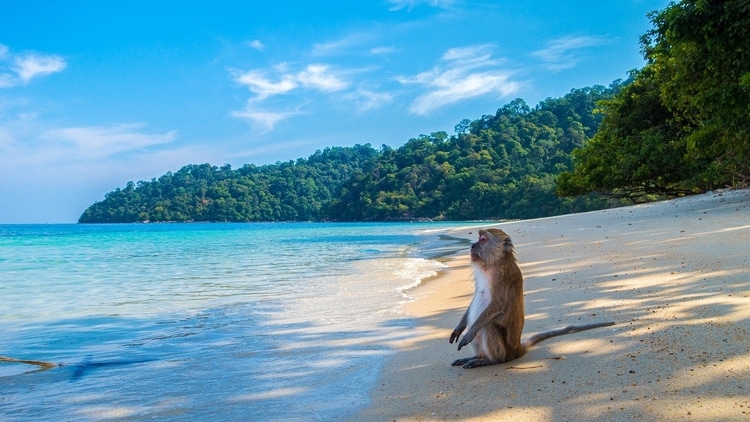What To Expect
When it comes to Southeast Asia, Thailand is the king of tourism. It’s the first country most people think of (and also the most visited) with regards to this part of the world and it comes as no surprise when you realize just how much it has to offer to travelers!
Thailand has a healthy mix of beautiful tropical islands, bustling urban cities, stunning temples, and breathtaking nature that there is something for everyone here. The country is very well-accustomed to tourism and most Thai people, especially in the tourism and service industry, are able to speak English.
Most people start their trip in Bangkok and then head to the part of the country that attracts them the most. Bangkok is a world-renowned city worthy of a visit in and of itself, but you would be doing yourself a disservice if you didn’t also visit both the southern and northern parts of the country.
The south is where you will find all those tropical islands, headlined by Phuket, Koh Phangan, Koh Tao, and Koh Phi Phi. The north is where you will find spectacular temples and elephant sanctuaries, the best spots being Chiang Mai, Chiang Rai, and Pai.

Citizens of most developed countries can enter Thailand visa-free for up to 30 days (some 90). This can also be extended before it expires for another 30 days for a fee of ฿1900. Visa runs are also commonly done to extend stays in Thailand.
Some nationalities that aren’t visa-exempt can get a visa on arrival valid for 14 days, but most others must go to the nearest Thai embassy and apply for a Tourist Visa to be granted entry.
The Hepatitis A and Typhoid vaccines are recommended, especially if traveling to rural areas. Also make sure you are up to date on your standard vaccinations and consult a health professional for further advice.
In addition, a Yellow Fever vaccination is mandatory if you are traveling to Thailand from a country with a risk of YF transmission, including if you only passed through the airport.

This page may contain affiliate links which means I get a small commission, at no extra cost to you, if you make a purchase with them. This helps keep the site running and the travel tips coming! For more info, check out my Privacy Policy & Disclosure.
Key Information
Largest Airports:
1. Bangkok (BKK) – Suvarnabhumi
2. Bangkok (DMK) – Don Mueang
3. Phuket (HKT)
4. Chiang Mai (CNX)
5. Hat Yai (HDY)
Best Time To Visit
Most of Thailand benefits from a tropical climate which means year-round warm temperatures. There are really only two seasons in Thailand, the monsoon/wet season in the summer which is when temperatures can get quite hot and the country gets the majority of its rainfall, and the dry season in the winter which is the most popular time to visit.
The best time to visit Thailand is during its dry season (November-March) when the skies are clear and temperatures are pleasant.
If visiting Northern Thailand, then it is recommended to visit between March-May as it can sometimes get chilly up there in the winter, especially at night.
Booking in advance is not necessary if you are traveling during the high season, but it is recommended if you are visiting during any big festivals such as Chinese New Year, the Full Moon Party (only on Koh Tao, Koh Phangan, or Koh Samui), or Songkran.
High Season: November – March
Low Season: July – August
Top 5 Destinations

Bangkok

Phuket

Chiang Mai

Koh Tao

Koh Phi Phi
Currency Information

The currency used in Thailand is the Thai Baht (THB/฿). The notes come in denominations of ฿20, ฿50, ฿100, ฿500, & ฿1000.
The Baht is further divided into 100 Satang. The coins come in denominations of 25 Satang, 50 Satang, ฿1, ฿2, ฿5, & ฿10.
Use the currency converter below to determine the latest exchange rate.
Tipping Guide
Tipping is not customary in Thailand, but if you wish to tip for good service, here are some guidelines to follow:
Hotel Bellhops: ฿20 per bag
Hotel Housekeepers: ฿20 per day
Restaurant Servers: 10% of the total bill
Spas & Massage Parlors: ฿20-50 for every 30 minutes
Bartenders: round up to the nearest multiple of 10
Taxi/Uber Driver: round up to the nearest multiple of 10
Tour Guide: 10% of the total tour price on single-day tours and at least ฿100 per day on multi-day tours
Note: Some restaurants may already include a service charge of 10% on the bill. Any other tips you do leave should be left in cash and given directly to the person you want it to go to.
Power Outlet Information



Thailand uses 3 different outlet types. Just like most of the Americas, they use the Type A and Type B outlets, but they also use the Type C outlet which is useful for European travelers. Type A plugs can fit in Type B outlets, but not vice versa.
It is not guaranteed that you will find an outlet of each type in every building in the country so it is recommended to travel with a compatible adapter for each one just in case.
Get your compatible Type A/B adapter here.
Get your compatible Type C adapter here.
The voltage used in Thailand is 230V. Learn more about how this may affect your electronic devices in my Guide to the Top Travel Accessories.

Cellphone Information
Thailand has excellent overall 4G LTE coverage, but it can be spotty in rural areas. Make sure your phone is GSM-compatible with the primary 3G frequency and 4G LTE band used in the country to ensure you will always have connection.
Learn more about this in my Guide to Travel-Ready Phones.
Information about local prepaid SIM cards in Thailand
Calling Code: +66
Emergency Numbers: 191 (Police), 1155 (Tourist Police), 1669 (Ambulance), 199 (Fire)
3G Frequencies Used: 2100 (primary) + 900 & 850
4G LTE Bands Used: 1 (primary) + 3, 5, 8, & 40


